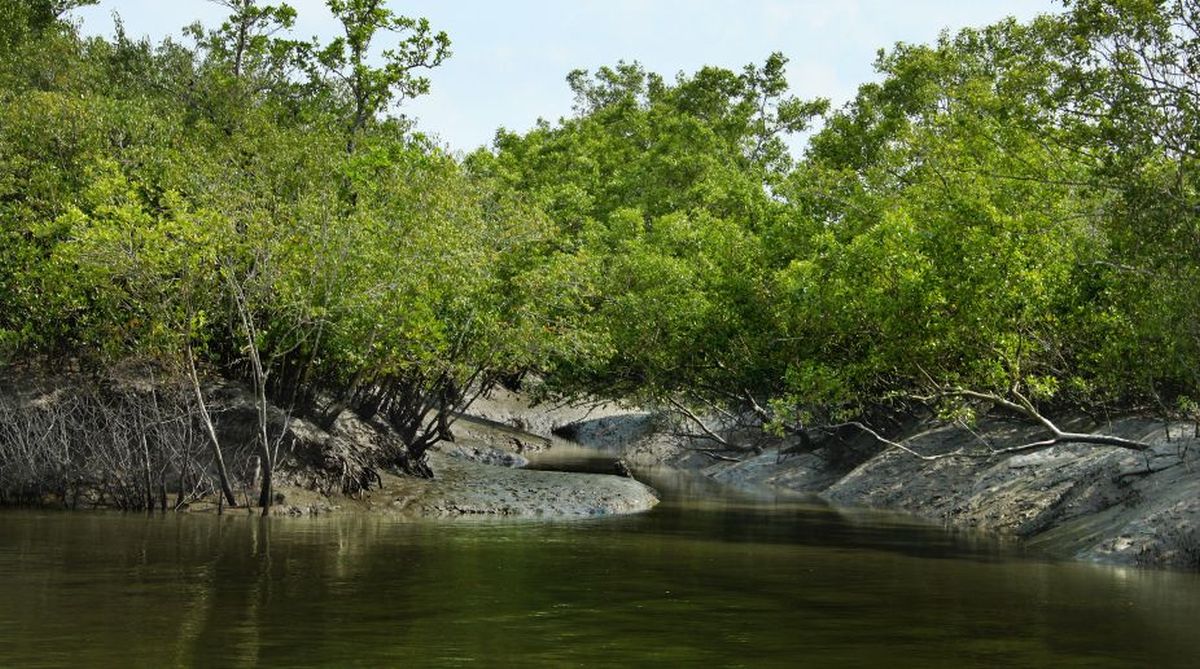Wetlands are virtually the fusion of terrestrial and maritime features and bring forth vegetation, with forests, often bordering a coastline. Channels of freshwater from tributaries influence the ecology and the water eventually empties into the sea. Since wetlands are near the sea, the level of salinity in the water impacts both the flora and fauna of the region.
They act as buffers on coastlines against storms and cyclones. World Wetlands Day is observed on 2 February every year. It has been established to raise awareness about the value of wetlands for humanity and the planet.
Advertisement
Wetlands account for 4.7 per cent of the total geographical area of India. They provide numerous ecosystem features but unfortunately happen to be under stress, due to urbanisation and pollution, which have been contributing to their loss.
To view a particular wetlands feature, we may focus on the Sundarbans mangrove forests, with channels of water flowing along and even viewing a Bengal Tiger, perfectly at home, wading across a rivulet. The scenario is evocative of Charles Darwin’s words during his epic visit to the Galapagos, when he described the islands as “a world within a world.”
The Sundarbans cover one million hectares in the deltas of the rivers Ganga, Brahmaputra and Meghna and is shared 60:40 by Bangladesh and India; it is the world’s largest coastal wetland system. The area experiences a subtropical monsoonal climate, in addition to severe cyclonic storms.
Large amounts of sediments carried by rivers contribute to its dynamics. The dominant mangrove species is Heritiera fomes, locally known as sundari. The trees have a thick canopy and the undergrowth is covered by mangrove seedlings. Levels of salinity change over a range of temporal, or earthly, scales. The biodiversity includes some 350 species of vascular plants, which have tissues that conduct water of flowering plants or ferns. There are 250 varieties of fish and 300 different birds.
In addition are mollusks and reptiles, including the King Cobra, which is highly endangered and other mammals. Notwithstanding the Bengal Tiger, which is also highly endangered, are the hog deer and barking deer suspected to be extinct in this habitat.
Over the last two centuries, a large area of the Sundarbans mangroves has been converted into paddy fields and more recently shrimp farms are being established and the region has been exploited for timber, prawns and fodder. The biodiversity of mangroves has been in focus because their ecosystems are being threatened by global climate change particularly, rising sea levels.
More than 40 per cent of the world’s mangroves are located in South and Southeast Asia. Pollution has impacted the catchment of the Ganga and Brahmaputra rivers due to synthetic fertilisers and use of pesticides in adjoining areas of cultivation, which has created a serious threat to these wetlands, with aquatic vegetation and fauna being directly affected.
Industrialisation particularly in the Haldia Industrial Complex and on the western side of the Hoogly river add to the pollution, which in turn, will gradually contribute to the degradation of the Sundarbans mangroves, as pollutants move downstream.
To exacerbate this issue there have been incidents of oil spills with one example being the Panamanian cargo ship, in 1994, near Dangmari, which affected 15 square kilometres including a considerable area of Sundarbans’ mangrove forests. Experts noted that certain types of grasses, fish and aquatic mammals perished, since the oil forms a suffocating cover over the surface of water.
After Independence, India declared the Lothian Island, of 3,800 hectares, a Wildlife Sanctuary and later a much larger area comprising the Sajnakhali Wildlife Sanctuary. Project Tiger established a Tiger Reserve in Sundarbans covering 2,585 square kilometers, in 1973. This was followed by another sanctuary, on Haliday Island, of about 600 hectares. The estuarine crocodile and the Olive Ridley turtle are receiving attention by way of captive breeding.
No narrative on the Sundarbans will be complete without narrating the local’s relentless search for honey, which translates into a clash between man and nature, where inevitably, nature appears to be the loser. Local fisherman move from island to island for weeks in their precarious boats, collecting honey from some of the largest and most aggressive bees in the world. After collecting the honey, some fishermen light fires inside the hives to melt any remnants and thus burn the larvae.
Climate change will disturb the rainfall pattern too and as the vegetation continues to suffer, so will the wildlife, because the pyramid of life will be disrupted. The authorities concerned must not permit this region, already recognised by Unesco, to disappear from India’s list of precious legacies.











